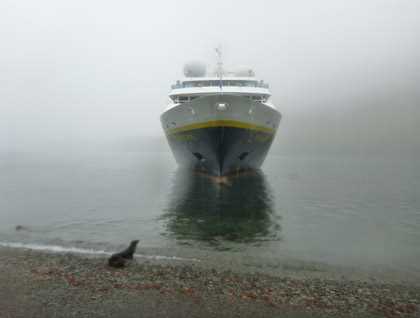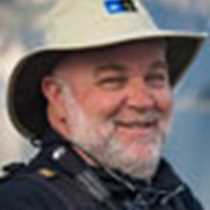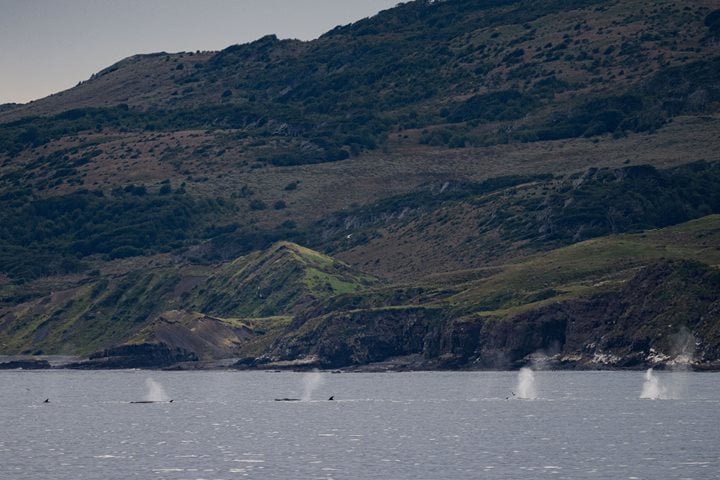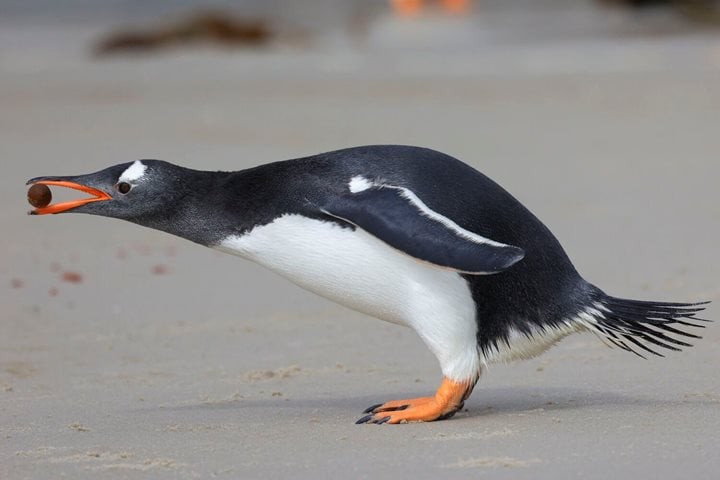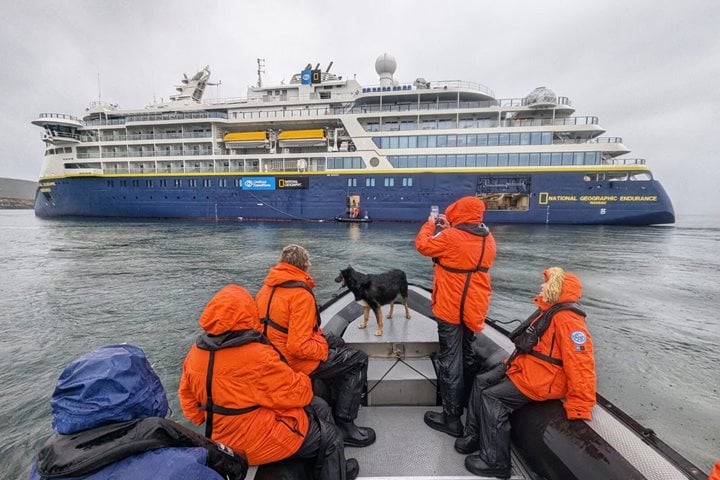Just as breakfast was ending, National Geographic Orion cautiously entered Stromness Bay in a heavy fog. The gloom added a sense of foreboding to the scene as the ruined, crumbling buildings of the Stromness whaling station appeared as ghosts from an abandoned age. Giant, rusting propellers were scattered on the beach next to all manner of pipes and gantries and masts and boilers, twisted metal and links of chain: the legacy of the industrial revolution. Rather than risk fouling our anchor on the submerged junkyard at the bottom of the bay, our captain chooses to simply push the ship’s bow right up to the landing beach!
When the hunting of whales in the southern ocean became economically unfeasible, the humans moved on, leaving places like this for the locals to inherit. For now, Stromness belongs to the fur seals, assisted in small ways by a few penguins and elephant seals. The entire scene on the shore is dominated by the masses of fur seals, mostly young pups born this season. The haunting scream of the few mother seals calling to pups echoes off the mountains, while the tiny growl and bark of the pups carries only a few yards. The beach is the epicenter activity, and one can hardly walk five meters without encountering a seal. Further up on the grass, a few seals are napping, probably exhausted from the endless chasing and bickering that goes on at the water’s edge.
The wildlife at Stromness ignore the warning signs posted to keep humans away from the ghost town. The infrastructure that was built to harvest animals is now only a danger to us, not only from falling debris but from the asbestos that was used as a building material a century ago. The attraction for us today is about one mile up the river, towards a waterfall made famous by Shackleton, Creen, and Worsley, who found salvation here at Stromness after enduring an epic struggle for survival. Our guide Tom Ritchie led the hike up the valley, stopping along the way to point out geology, bones, elephant seals, all the while reminding us of the prominence of Stromness in Shackleton’s story.
In the afternoon, the weather hasn’t improved much as we drop anchor off tiny Prion Island, home to many of South Georgia’s birds, including the wandering albatross. The government has installed a boardwalk that slowly rises up to the top of the island so visitors have a chance to get quite close to some of the nests without disturbing the birds.The boardwalk is run like a concession by the fur seals and we either have to ask permission to pass or in some cases fight for it. The price of admission is well worth it when one arrives at the top deck to see a dozen or more wandering albatross soaring just overhead. In the tussock grass a bird has a nest just a few feet from a viewing platform, and goes about the job of tending the nest seemingly unperturbed by the constant click of camera shutters and whispers of excitement. Further away, more birds are on nesting and courting, and a downey giant petrel chick, looking somewhat bedraggled in the rain, waits for a parent to return from foraging at sea to bring the him another meal.
If the wandering albatross are the stars of Prion Island, the giant petrels, skuas, light-mantled albatross, and even a few South Georgia pipits all do their best to play supporting roles in what has to be one of the greatest shows on earth, and this afternoon we had front row seats.

